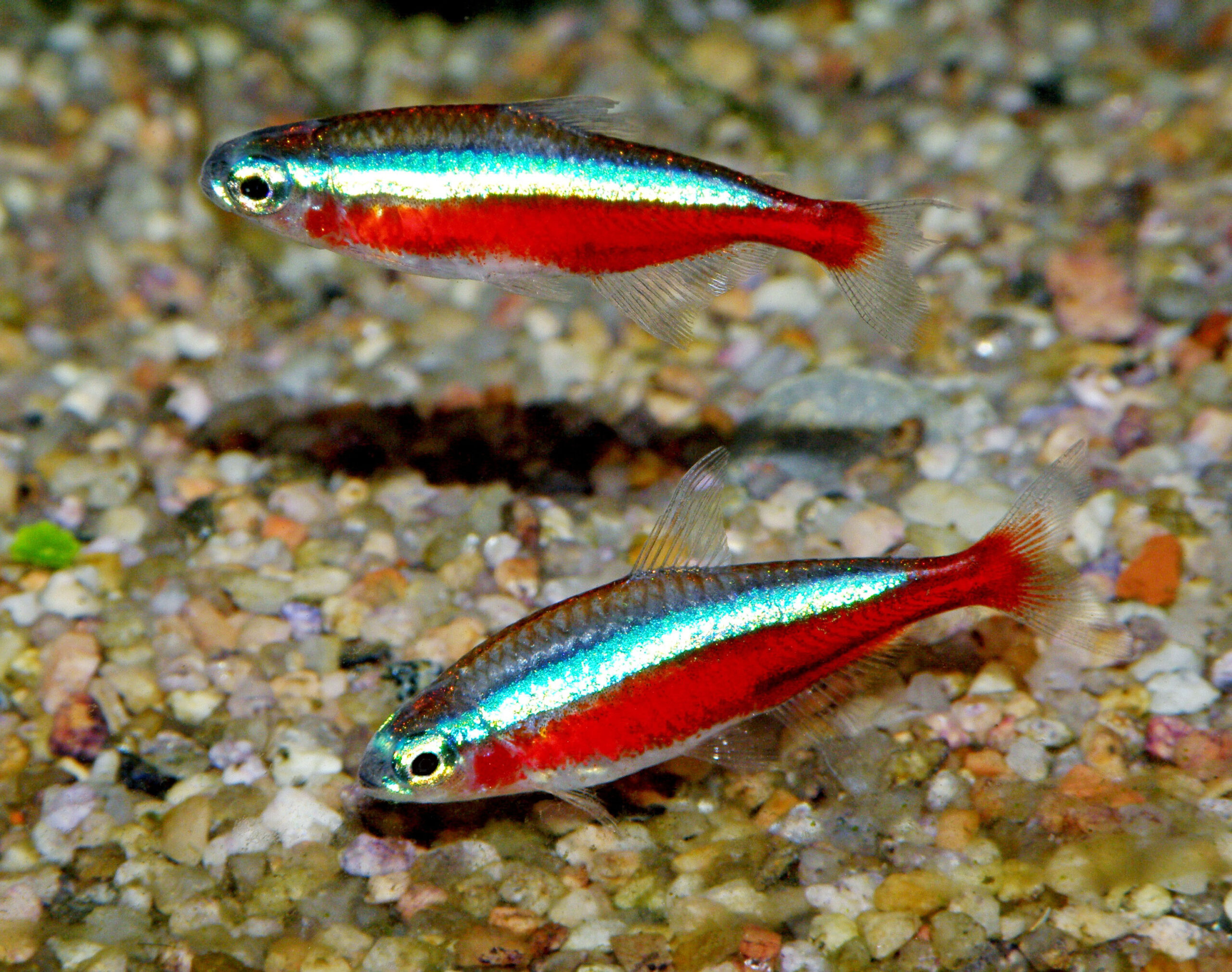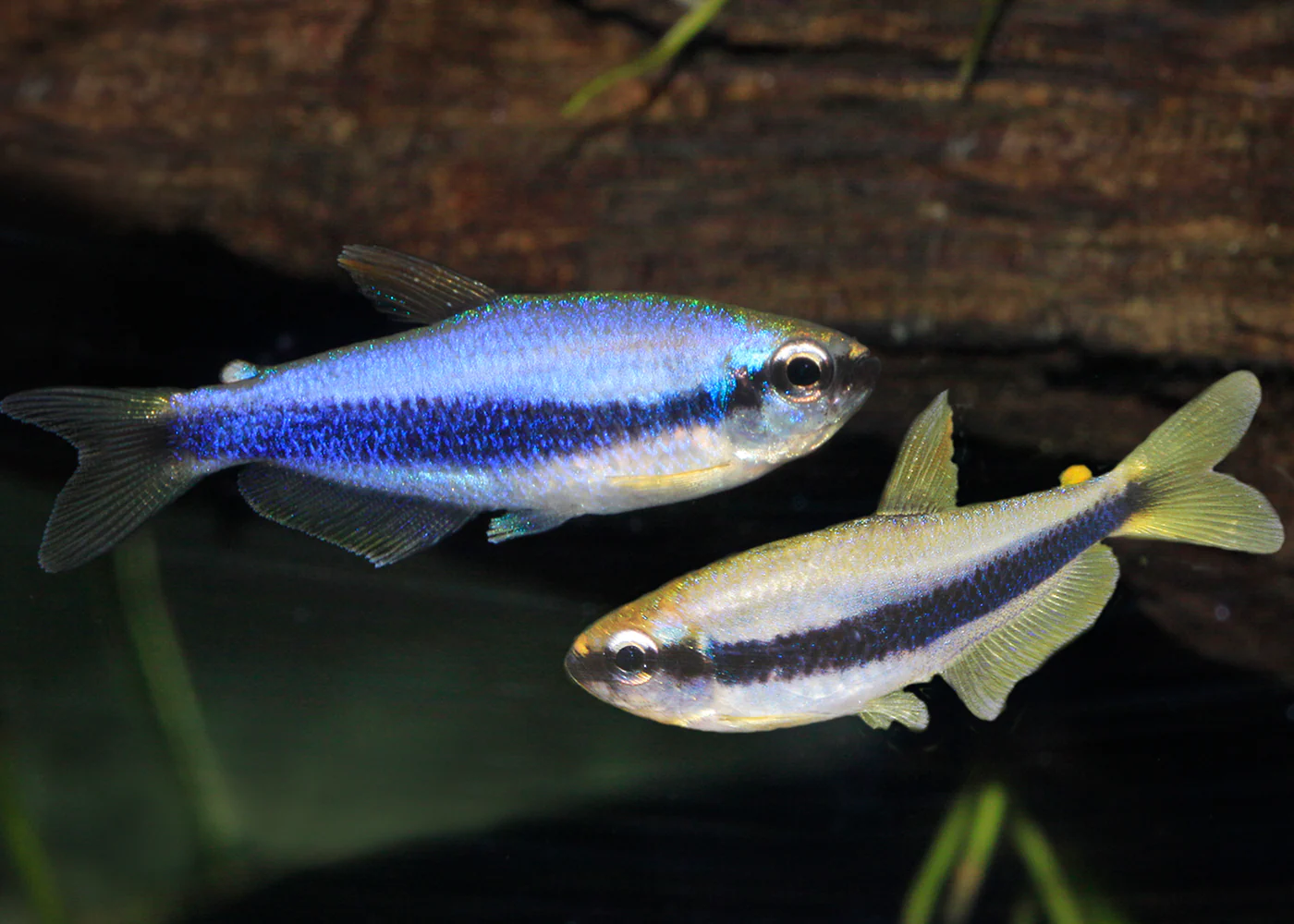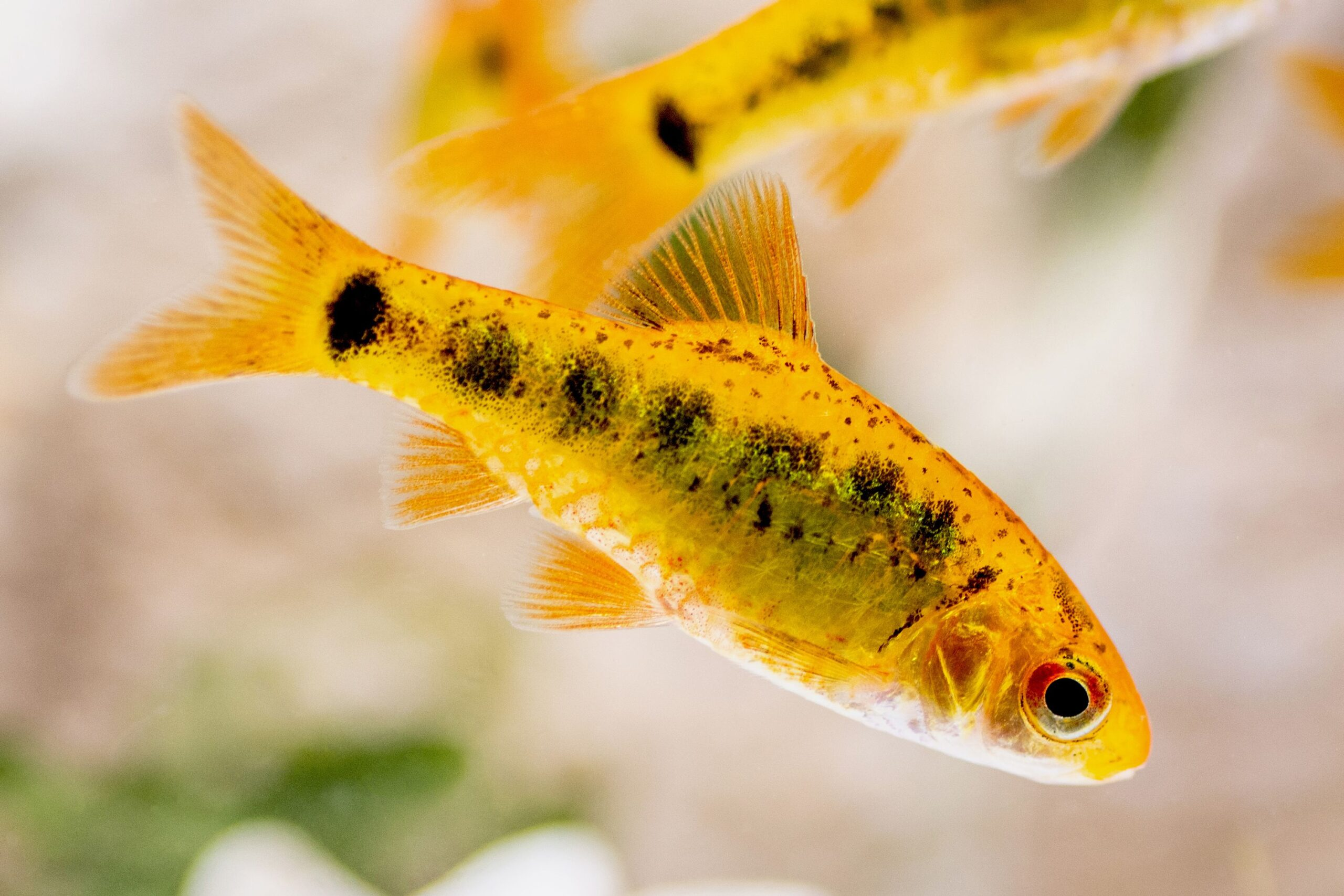The Green Tiger Barb (Puntius semifasciolatus) is a stunning variation of the classic Tiger Barb, featuring a deep emerald-green metallic body with subtle golden highlights. Its active and social nature makes it a centerpiece species in many community aquariums. When kept in a group of six or more, their playful schooling behavior creates a mesmerizing display of movement and color.
🐠 Behavior and Compatibility
Green Tiger Barbs are naturally active swimmers and can be mildly fin-nippy if kept in small numbers. To maintain harmony, always keep them in schools of at least six individuals. They coexist well with other fast-moving fish such as danios, rainbowfish, and certain tetras. Avoid housing them with slow or long-finned fish like bettas or angelfish.
🌿 Aquarium Setup
A well-planted aquarium with open swimming areas is ideal. Use a fine gravel or sand substrate and add driftwood or rocks to create a natural environment. Maintain stable water conditions with regular water changes and moderate filtration. A gentle current mimics their native river habitats, enhancing their overall health and coloration.
🍽️ Feeding
As omnivores, Green Tiger Barbs accept a wide range of foods. Offer a balanced diet of high-quality flakes or pellets, supplemented with live or frozen treats such as brine shrimp, bloodworms, or daphnia. A varied diet enhances their color vibrancy and promotes healthy growth.
💡 Care Level
Perfect for beginner aquarists, this species is hardy and adaptable. Consistent water quality, regular feeding, and a well-maintained environment are key to their longevity — typically living up to 5–7 years in optimal conditions.
🌈 Why Choose the Green Tiger Barb
-
Brilliant metallic green coloration
-
Active and engaging schooling behavior
-
Hardy and easy to care for
-
Excellent for community tanks with similar species
-
Brings motion, energy, and life to any aquarium




Reviews
There are no reviews yet.